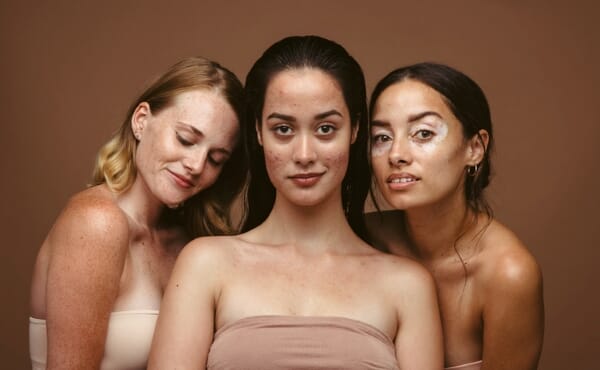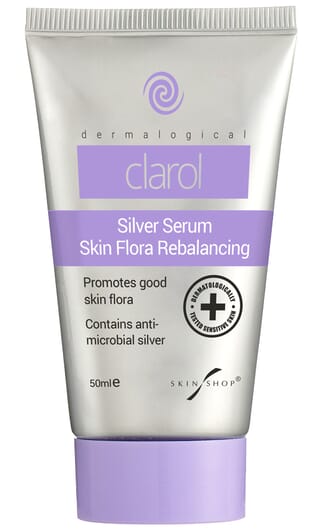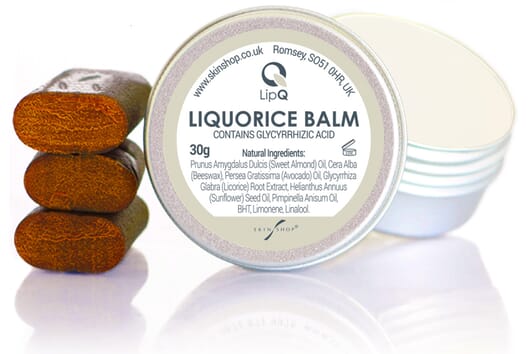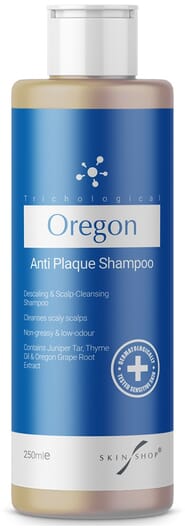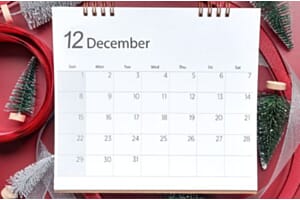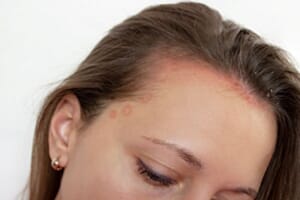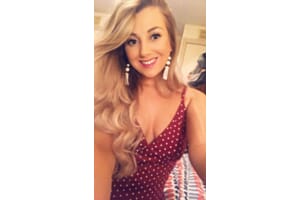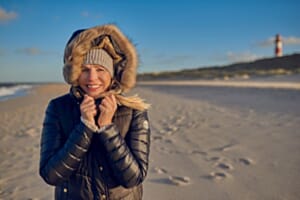If you have spots, you tend to assume you have acne, though this is not always the case. In fact a lot of ‘spots’ are caused by other factors, including skin allergies such as eczema or dermatitis, underlying health conditions such as rosacea or psoriasis, infections such impetigo or viruses such as herpes simplex.
Dermatologist Dr Eva Melegh highlights what causes actual acne and the other skin conditions that may often look like acne but aren’t.
1. Actual Acne
Normal acne is caused by a blockage of the sebaceous glands on the surface of the skin. Many things can cause this blockage.
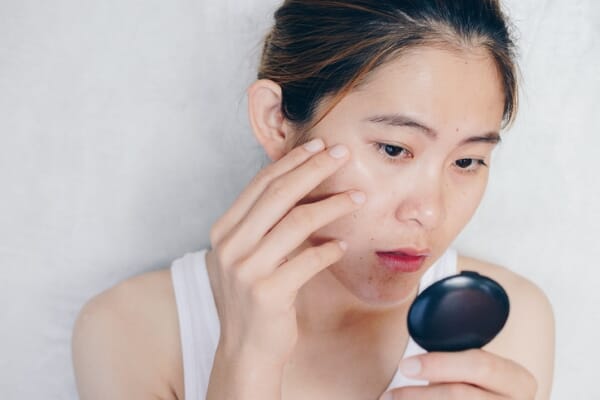
The main cause of typical acne experienced by 90% of teenagers is that hormonal changes, (namely the surge of testosterone that occurs in both teenage girls and boys) can cause the skin to harden slightly and block the sebum gland causing pimples to form.
Adult acne is also on the rise with 1 in 4 adult women experiencing acne during their adult life, which may also be due to hormonal surges linked to stress and modern forms of contraception as well as HRT during menopause.
How to know if you have normal acne;
You are a teenager and suddenly get spots or you are an adult and are under higher levels of stress.
You are using a new contraceptive, you are pregnant or in post pregnancy stage or you have entered perimenopause and/or are on HRT.
You have spots in particular in the T zone which is between your eyebrows, on your nose and across your cheeks and jawline.
Acne Treatment
For teen skin over the counter anti-bacterial washes and exfoliants aimed at teen skin.
For adult acne which is not as greasy as teen acne and more fragile and dry, a different approach to treatment is required. Clarol Silver Serum is a less harsh acne treatment aimed at adult skin which helps increase good skin bacteria to improve skin quality and resilience in adult skin while reducing the acne bacteria without drying out adult skin.
2. Allergy Acne
Skin allergies to external irritants can also cause spots but are not actually acne. Skin allergies to skin creams, SPF creams, beauty products and perfumes are on the rise and can cause small rash like spots to form usually on the sides of the face and neck.
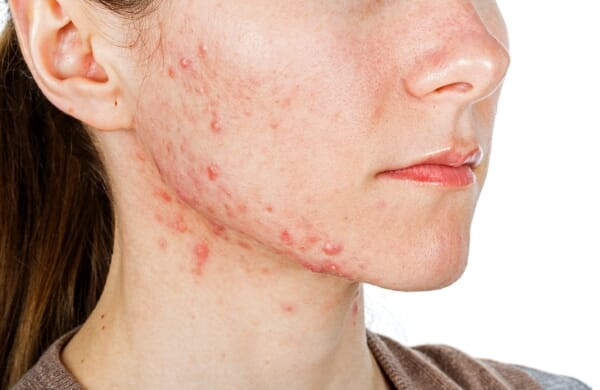
Allergic spots can be repeatedly triggered by an irritant and so appear like normal acne.
Another common cause of allergy spots is from shampoo. Normal shampoos contain detergents and strong perfumes. When people with long hair sleep on their hair after washing it with shampoo, this can cause spots to form on the sides of the face and neck. Simply tying hair back at night and swapping to a non-chemical non-perfumed shampoo can often clear up allergy acne.
How to know if you have allergy acne;
If the spots itch at all
You have spots mostly on the sides of your face
You have long hair and sleep with it loose at night and have used a new shampoo recently
Your spots get worse or better when you change either skin creams, cosmetics or perfumes
You have spots just around your neck (this could be allergy spots caused by a reaction to a washing powder on the collar of your clothes)
Allergy acne treatment
Prescription topical steroids (although these should not be used near the eye area and used with caution and limited use only on the face).
Plant-based steroids known as phytosterols are a good alternative option for allergy acne on the facial area or near the eyes. Hydrosil Turmeric Butter & Hypoallergenic Milk Salve and Hydrosil Dry Eye Gel both contain the phytosterol cardiospermum which has a calming and anti-itch effect on atopic skin reactions without the associated risks of using steroid creams on the facial and eye area.
3. Acne Rosacea
Rosacea is a skin condition that causes spots but is not normal acne. Rosacea is caused by a dilation of the blood vessels just below the skin’s surface. This causes the skin to swell and the skin pores to expand letting in more surface bacteria which can then cause small pustules to form.

How to know if you have acne rosacea;
Your nose and/or cheeks are often flushed, itchy and sensitive
The spots are small and pussy and only on your cheeks and nose and in the areas of red itchy skin.
You were over the age of 40 when you started to get the spots (in particular if you are female as women are more prone to this skin condition than men)
The red patches of skin feel bumpy and tight.
Your spots and redness get worse in the heat or the cold, after direct sun, after drinking alcohol or eating spicy food, after you use certain skincare products and sun creams and if you are more stressed than normal.
Acne rosacea treatment
Rosacea is often treated by doctors with antibiotics (both oral and topical). However, many sufferers find their skin quickly becomes resistant or is reactive to antibiotics and needs more frequent treatments which is not possible as antibiotics should not be taken too frequently.
Acne rosacea is a chronic skin condition so needs constant management, therfore a targeted skincare regime can be very beneficial.
Kalme Skincare is a range of products designed specifically for rosacea-prone skin with anti-redness and de-sensitising ingredients as well as a mineral SPF which can help managing symptoms, allowing less frequent use of antibiotics and only for severe flare ups when necessary.
4. Fungal Acne
Yeast infections of the skin are called cutaneous candidiasis and this type of skin fungus can appear on the face and cause what looks to be small clusters of ‘acne like’ spots.
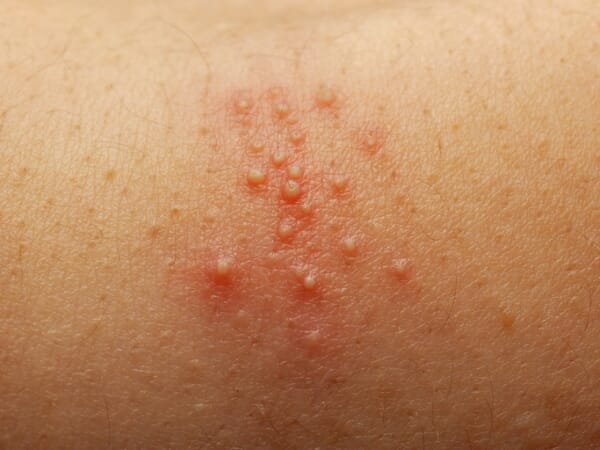
How to know if you have facial fungal acne;
The spots are small and always puss filled with not much inflammation around them and appear in clusters.
You have or have had other fungal infections elsewhere on your body in recent months (feet, scalp and genitals are common places)
The spots get worse with anti-acne treatments
The spots are located mostly on the chin, upper lip and mouth area or among facial hair or stubble
You have a white coating on your tongue
You also have dandruff
Fungal acne treatment
Prescription topical anti-fungal creams
5. Itchy Scalp Acne
Itchy scalp acne is often actually scalp dermatitis or scalp eczema. Normal scalp acne does ot itch. Scalp eczema or scalp dermatitis can cause small spots to appear around the hair line and on the neck as well as the scalp because the actual dermatitis makes the scalp very dry and irritated and scratching it causes small scabs on the scalp that can become infected and appear like spots.

Scalp dermatitis/eczema is often caused by a reaction to shampoo, hair sprays, hair dyes or any other perfumed or chemical hair products. Frequent blow drying at high temperatures can also lead to scalp dermatitis.
How to know if you have itchy scalp acne or scalp dermatitis
The spots you have are mostly clustered around the hairline, behind the ears or on the crown of the scalp.
You have a very itchy scalp
You have a flaking scalp with dry white small flakes
Your dandruff but does not improve with anti-dandruff shampoos, in fat may get worse.
Scalp dermatitis acne treatment
Anti-dandruff shampoos are made for fungal dandruff and not dry scalp dandruff so using them could actually make the condition worse. You need hair products for dry scalp such as Hydrosil Scalp Shield Shampoo & Scalp Tonic which contain plant steroids to reducing the itching and irritation and ingredients to repair scalp barrier function to reduce dryness.
6. Herpes Acne
The Herpes Simplex virus lives in the base of the spin but lies dormant in the skin cells around the mouth and causes cold sores.
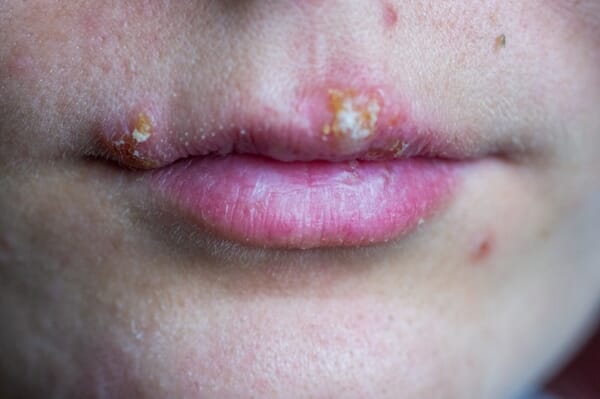
While most commonly appearing on the lips, herpes sores can also appear on the skin under or around the nose and sometimes on the chin and cause small fluid and puss filled blisters that resemble acne. If facial herpes appears without cold sores on the lips, the condition can sometimes be misdiagnosed as acne by doctors.
How to know if you have herpes acne;
The spots are only around the mouth area and on the chin
The spots contain lots of fluid and burst easily, even without squeezing.
The burst spot leaks clear liquid
The spots are large and quite red
The spots felt hot and itchy before they could be easily seen
The spots do not respond to any acne treatments
Herpes acne treatment
Over the counter cold sore treatments, but these are for only when the sores have appeared.
There are relatively few preventative treatments for cold sores with the exception of LipQ Liquorice Balm which is an odourless lip balm containing a concentrated extract of liquorice root that has been trialled by the Herpes Virus Association and found to reduce the frequency and intensity of cold sore outbreaks if used daily in between outbreaks.
7. Hives Acne
Hives appear as raised, flat-topped bumps that are smooth to the touch and typically red in colour. They can occur anywhere on your face and neck, including the ears.

Hives are genetically linked and sufferers get several outbreaks over a long period of time. Facial hives are often incorrectly identified by doctors as acne.
How to know if you have hives acne;
The spots rarely come to a head, but can look red and raised like normal acne does before puss appears
The spots are very itchy
The spots appeared after sun exposure
You recently took a course of antibiotics
You were recently bitten by an insect
You also get hay fever
You recently had a severe flu, tooth infection or sinus infection
Your face is slightly swollen
Hives acne treatment
Specific prescription anti histamines or oral corticosteroids
8. Psoriasis Acne
Psoriasis is a skin condition that is caused by the over activity of skin cell division and is genetically linked, although certain lifestyle factor scan trigger it or make it worse such as stress, smoking, obesity, physical and emotional trauma, some medications and viruses.
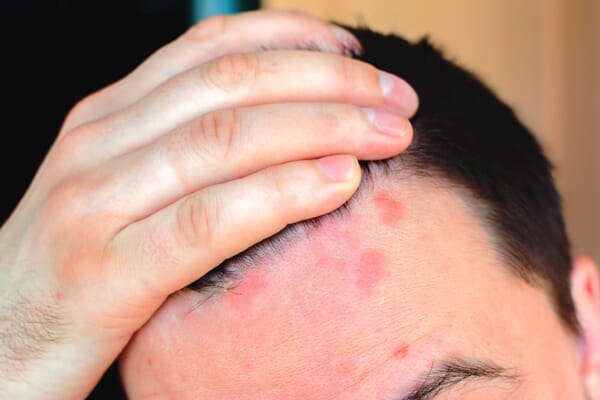
There are two types of psoriasis, pustular and gutate. Pustular psoriasis on the face alone is not as common as on othe parts of the b ody but when it does appear it can look like acne.
How to know if you have psoriasis acne
You have red clusters of pussy spots between your eyes, around your nose, near your hairline and behind your ears and on yoru neck
There is some scaly greyish skin around the spot clusters
Your skin flakes a bit
The spot clusters are getting progressively bigger and joining together
The spots seems worse and more irritated in the mornings when you wake up
You have similar patches on your shoulders
Psoriasis acne treatment
Topical steroids and coal-tar treatments are often prescribed for psoriasis but are not advised for regular use on the face. Facial psoriasis is often made worse by detergents and perfumes in normal shampoos when the residue runs over the facial skin and hairline. This can trigger something called ‘morning psoriasis’ which is when symptoms seem to flare overnight and we worse in the morning when waking up.
Targeted shampoos for scalp psoriasis such as Oregon Anti-Plaque Shampoo are helpful for managing and reducing trigger points for for scalp and facial psoriasis.
9. Impetigo Acne
Impetigo is a contagious, superficial bacterial infection of the skin and is most likely to occur in warm and humid environments and is most commonly spread by close contact (such as family members).
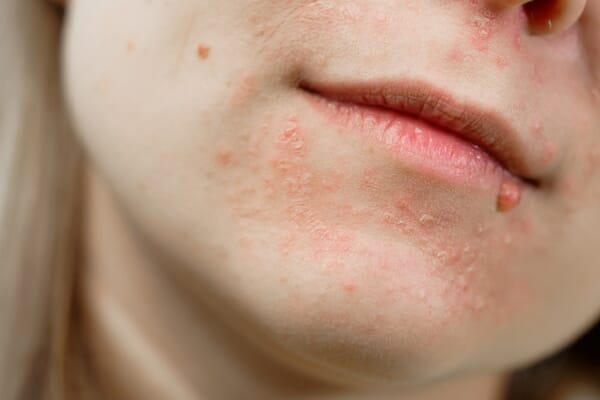
There are two types of impetigo, bullous and non-bullous impetigo, the non-bullous type causes small pussy spots that look similar to acne.
How to know if you have impetigo acne;
The spots start as small red bumps more like insect bites
Later the spots have puss in them that then turn to a honey coloured scab
The spot formation continues in one-week cycles
The spots are mainly clustered around the nose and between the nose and lips
Your lymph glands feel slightly tender
Other members of your family or people you have been close to have similar symptoms
Impetigo acne treatment
Prescription antibiotics
10. Perioal Acne
This is a type of dermatitis that often appears on the face and can look very similar to acne.
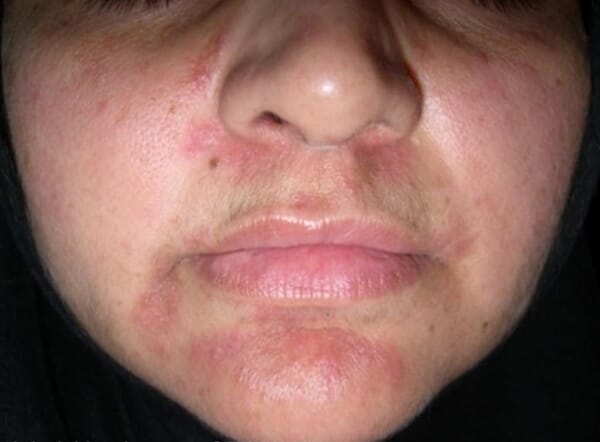
How to know if you have Perioal Acne
Perioal acne usually appears on the face with inflammatory papules with underlying redness patches of about 1-2 mm in diametre which are clustered most commonly around the mouth and nose but can also appear around the eyes.
Woman between 25 and 45 are more prone to it
You often use oily face creams
Your symptoms do not repond to any acne treatments, in fact they are making it worse.
The spots are itchy
Perioal Acne Treatment
Topical antibiotics
Try to avoid anything with harsh chemicals or strong scents until the spots clear up. Avoid using acne cleansers with acne-fighting ingredients, such as benzoyl peroxide or salicylic acid as they can make it worse. Sometimes, even fluoride toothpaste can aggravate perioral dermatitis which is near the mouth.



